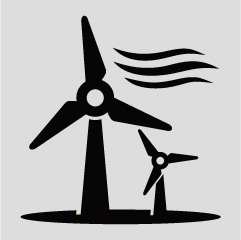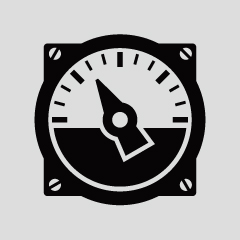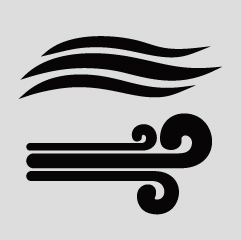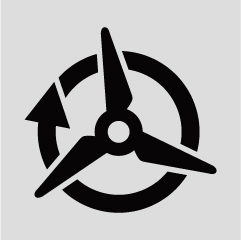Performance Optimization
For existing wind farms, our solution is focused on power performance optimization. Seeing the wind exactly as the turbine sees is essential for meaningful performance analysis. Positioned on top of the nacelle, our lidars systems measure, log and characterize the approaching wind at hub height.
This information is the link often missing between your turbine “fuel”, the wind, and your energy production. It allows you to analyses your turbines and wind farms in many ways, depending on your focus of interest:
Power Curve Measurements
Yaw Error Correction
Nacelle Anemometer Calibration
Wind Sector Management
Forecasting Optimization
Power forecasting is the ability to predict the energy that will be produced by a wind farm in a mid to long-term time-line. For this application, the Lidar is the perfect tool required to measure the wind remotely of a wind farm in order to estimate the upcoming wind.
Mid to long term forecasting is also crucial in terms of data assimilation in order to improve forecasting models with high-quality data on-site and off-site with a network of Lidars. Indeed, the profitability of a wind farm is measured by the total power output over the capital investment to build the farm. That is entirely built on power forecast, hence wind energy.
R&D: Wake & Forecasting
Thanks to the versatility and polyvalence of Wind Lidars, new applications are now emerging in the wind research community, such as wake studies, wind farm forecasting optimization, feed-forward turbine control, wind farm management, etc.
WAKE STUDIES
The wake is flow region downstream to a wind turbine, which is a step-order different from the inflow to the turbine in terms of wind speed and turbulence. Subsequently, the wake generated by the first array of turbine, affects the wind that the second array of turbine will see. Since the wind inflow determines the power output and the mechanical loads experienced by each turbine, assessing wakes is a key factor for the evaluation of the annual energy production of a wind-farm and the optimization of the wind farm layout.
The combination of a scanning Lidar with a Wind Iris turbine-mounted LIDAR provides a comprehensive characterization of wake effects, at short and long distances simultaneously. It captures real-time wake effects in a wind farm, from turbine to turbine. This type of assessment can be done Onshore or Offshore, whatever the size of the wind farm and the positioning and the size of the turbines.







